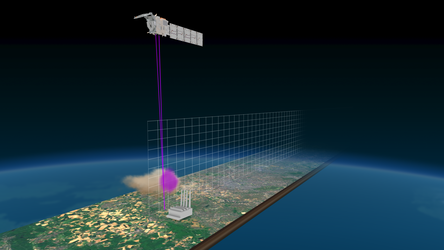

Stratospheric clouds over Antarctica
Launched in May 2024, ESA’s EarthCARE satellite has been making waves, with the first images from three of its scientific instruments already delivered. Now, the spotlight is firmly on the atmospheric lidar, the most advanced of the satellite’s four instruments. This cutting-edge sensor has captured detailed 20 km-high vertical profiles of atmospheric aerosols – tiny particles and droplets from natural sources like wildfires, dust, and sea spray, and from human activities like industrial emissions or burning of wood – and clouds across various regions of the globe.
This image from the atmospheric lidar, captured on 2 August 2024, offers a profile of polar stratospheric clouds over Antarctica. The grey strip below, as featured in all of the images, is the corresponding area captured in the infrared by EarthCARE’s multispectral imager instrument, which gives natural visual context to all of the instruments’ data. Polar stratospheric clouds are crucial contributors to the depletion of stratospheric ozone during winter and spring. These clouds serve as surfaces for chemical reactions that generate chlorine free-radicals, which actively destroy ozone molecules in the stratosphere. This process is a key factor in the formation of the infamous ozone hole over Antarctica.
The jagged shape of the clouds in the centre-right is likely to be caused by gravity waves. Gravity waves form when air is forced upwards into a layer of stable air and gravity drags the air back down, creating a ripple effect – like the ripples of waves in the ocean. These waves transfer energy and momentum from the lower atmosphere to the upper atmosphere, influencing weather patterns, general atmospheric circulation and impact the formation of polar stratospheric clouds.
Read full story: EarthCARE profiles atmospheric particles in detail





